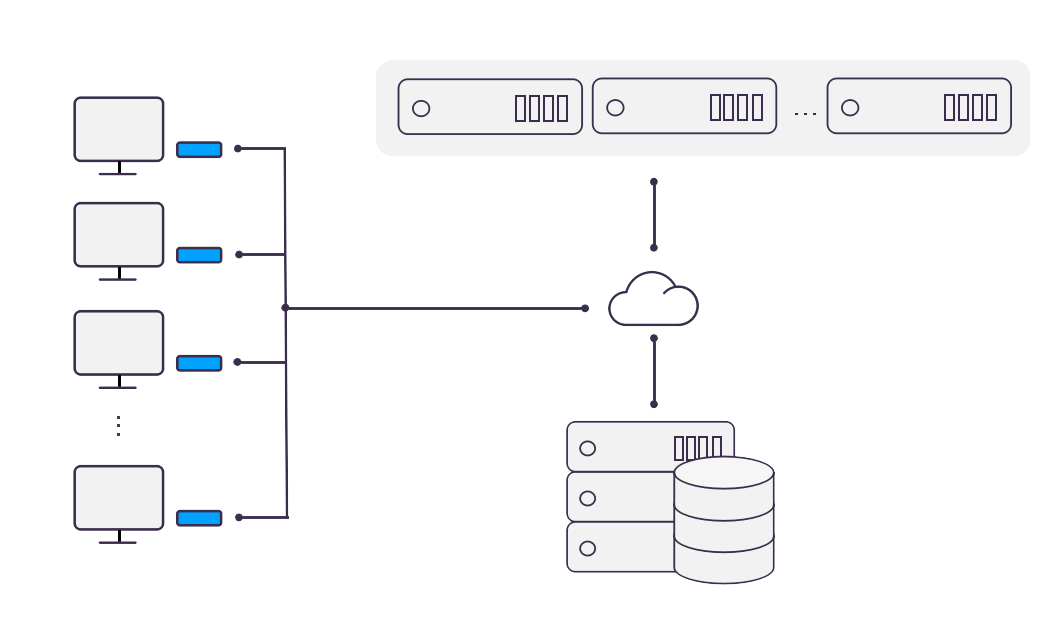More Implementation Practices To Facilitate Your
On-premises Desktop Virtualization Deployments
vCloudPoint provides two basic methods for creating a centralized computing environment for customers: remote desktop services (RDS) and virtual desktop infrastructure (VDI). These desktop virtualization approaches can reduce endpoint computing requirements and consolidate desktop processing and management. But despite these significant benefits, desktop virtualization deployments can be problematic without careful planning.
Organizations that implement desktop virtualization should understand their needs and business problems and have a clear strategy for deploying virtual desktops and assuring strong virtual desktop performance. To properly manage virtual desktops and give each user the very best experience, you must be able to categorize your user bases and assign the appropriate virtualization method to each target user. Learn the pros and cons of desktop virtualization technology, then find out the best practice for assessing your infrastructure, and it may not be one solution for the entire infrastructure.
The following examples illustrate more practices of on-premises desktop virtualization implementations and may help you plan and manage successful desktop virtualization deployments.
Multi-OS RDS with vMatrix
In this architecture, multi-OS will be mounted on the shared host with each has vMatrix Server Manager and a set of applications installed.
-
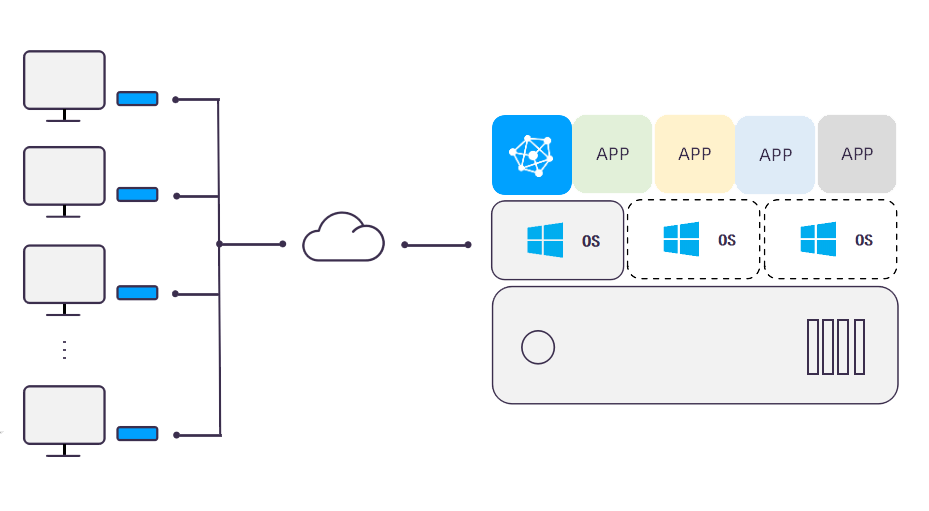
-
Benefits
- Reduce downtime from software failure – This is the simplest and most cost-effective way to reduce downtime caused by system or software crash for your RDS deployment. Simply restart the host and switch to a standby system in the event of a system or software failure. Users can resume work immediately with all files in the same places.
- Switch OSs depending on different scenarios – You can use the systems as different templates and switch freely according to the different scenarios. For example, in a school computing lab implementation, you can use an operating system with language learning applications installed when you are having a language class.
Remote Workstation with Virspire
Remote Workstation with Virspire is a client-server remote desktop solution targeted to enable power users to access high-performance workstations (or virtual workstations). With no additional infrastructure costs but a simple installation of Virspire Desktop Agent in the Windows workstation, users can access graphic-intensive applications and complex 3D models from vCloudPoint zero clients (a receiver software will later be launched to enable access from many other devices including other Workstations, PCs, Windows tablets and thin-clients. )
-
Benefits:
- Integrate the power users with the virtual environment – With console control and access, Virspire makes full use of graphics hardware on the workstation system, all the processing, including hardware-accelerated graphics with OpenGL or DirectX rendering is done on the workstation and only compressed bitmap images (the screen) are sent to the client device. This opens up the use of remote desktops and zero/thin clients to graphics-intensive industries such as CAD, oil and gas exploration, animation, architecture engineering, and construction which previously required local workstations.
- Enable unsacrificed performance – Virspire is distinguished by its proprietary DDP protocol which allows for real-time transmission of complex 3D images and video, which traditional remote desktop protocols struggle with. The DDP is an industry standard for delivering a graphic-rich desktop experience to your power users. With DDP, users can access all their desktops without sacrificing performance with remote USB and sound.
-
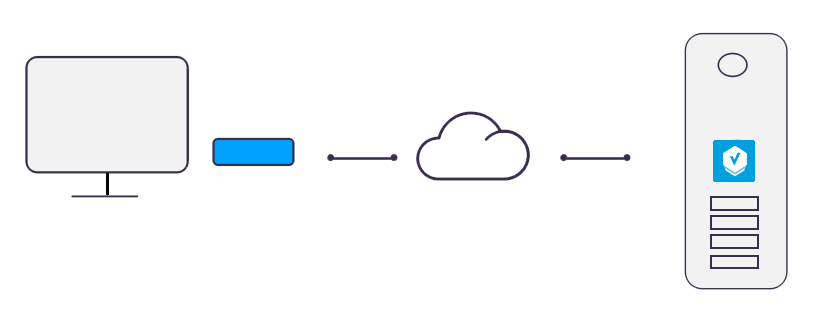
VDI Extension with vMatrix
Many customers have likely been exposed to traditional or 1:1 VDI, meaning one operating system per user. VDI Extension is the same architecture as the basic VDI, except that the connection broker running in the virtual machines is vMatrix Server Manager. This is to enable more than one instance of an OS to run at the same time. Within this architecture, vMatrix Server Manager provides connection and management for users and devices connected to the VM it resides. Server-side management is to be done through the management center of the virtualization platform.
-
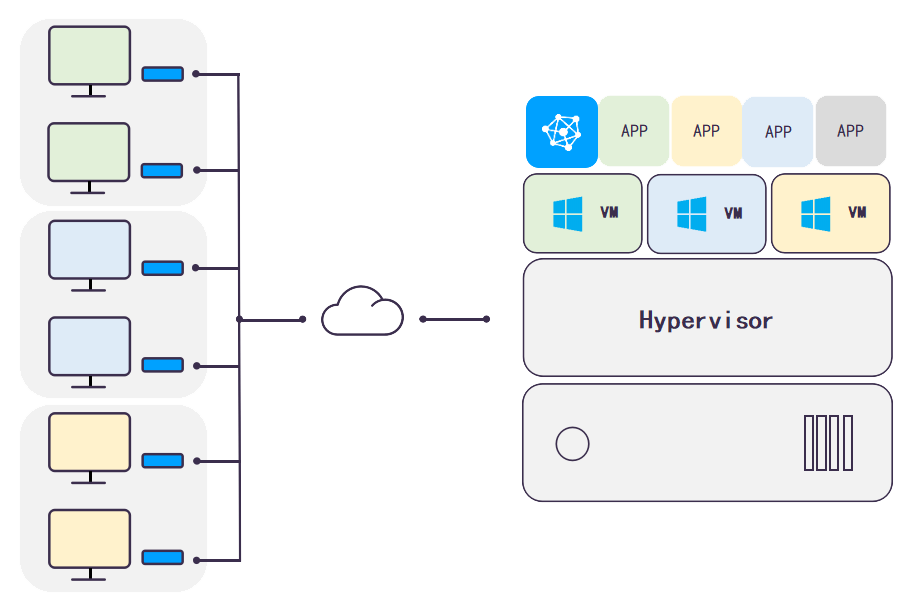
-
Benefits:
- Reduce the number of virtual machines – vMatrix Server Manager combined with server virtualization allows you to get more out of VDI infrastructure with one-to-many architecture. A single OS image with a set of applications can be shared to reduce the number of virtual machines over what customers would do with 1:1 VDI.
- Reduce technical support – Without giving users the administrative rights, desktop problems, and technical support can be greatly reduced.
- Increase flexibility – Since the vMatrix host is now just a set of files on a storage system, it can be easily deployed, copied, moved, and destroyed as needed offering flexibility and in some cases better utilization of hardware.
- Reduce infrastructure costs – Infrastructure and storage costs are significantly reduced and the cost of a VDI seat can be as low as 1/3rd, allowing you to take advantage of virtual infrastructure to deploy desktops with acquisition costs less than a PC.
- Better Management – The VDI extension architecture with vMatrix provides scalable, pragmatic management, and fault tolerance features to organizations.
RDS and VDI Hybrid with vMatrix and Virspire
While both RDS and VDI have their own strengths and weaknesses, they each have a specific purpose, and businesses may find it difficult to choose a single technology when they have different types of end-users. vCloudPoint allows businesses to have a mixed deployment of the two technologies to avoid limitations of using a single technology and makes the entire infrastructure more flexible. Administrators must segment the end-users based on their workloads and running apps before assigning them a vMatrix instance whether it is shared one with others or an independent Virspire instance. Within this architecture, Administrators can manage all in-LAN zero clients and vMatrix users through the management console of vMatrix Server Manager. VM management is done at the management center of the virtualization platform.
-
Benefits:
- Meet your needs today and tomorrow – The hybrid architecture allows businesses to make the best out of their virtualization implementation by utilizing the strengths of both technologies. They can tail the virtual desktops to be the needs of specific user engagements and opt for adjustments based on their present and future business needs.
- Increase flexibility without additional spendings – Users can interchangeably connect to a vMatrix shared instance and an independent Virspire instance with the same vCloudPoint zero client without having to purchase, install, and configure additional hardware or software.
-
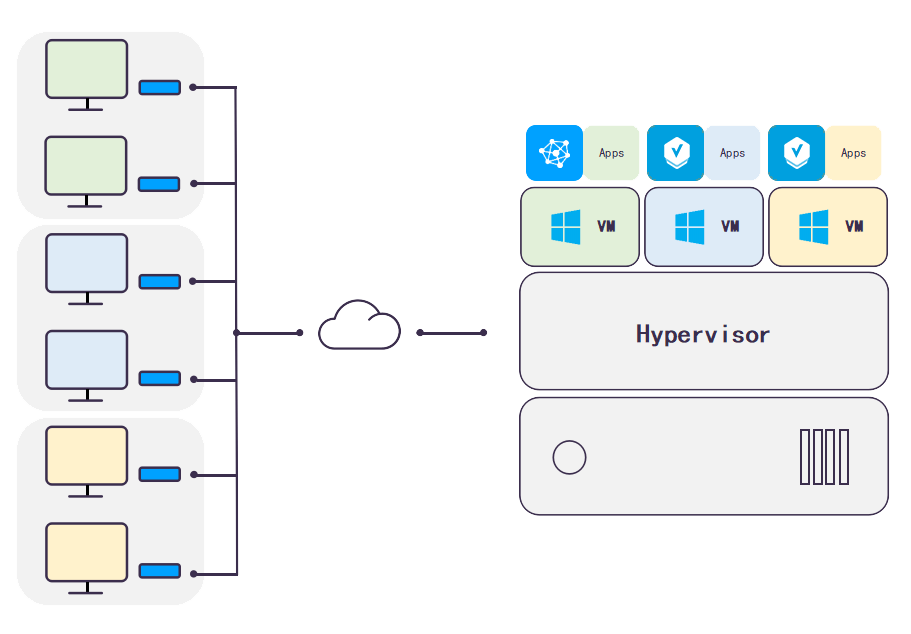
Server Cluster with Shared Storage
Shared storage is a single storage resource pool that is shared by multiple computers/servers. It allows servers to save data and files on a shared storage system which is designed to be independent from each server or computer. Shared Storage technology simplifies the processes of accessing, migrating, and archiving data. It is essential for achieving high-availability (HA) and to a large extent enables efficient “disaster recovery”, “continuous data protection” (CDP), and “business continuity” storage features. Organizations can choose from a number of shared storage solutions, depending on the particular business need and use case while NAS (Network Attached Storage) and SAN (Storage Area Network) are the most commonly used options.
-
Benefits:
- Increased reliability and higher availability – using shared storage software minimizes downtime since data is independent of the computing resources. The degradation of a server component doesn’t impact the data itself. Additionally, HA can be achieved by migrating the physical server to another server, with the virtual desktop accessing its latest data, as it was stored on the shared storage space.
- Better scalability – This is an essential attribute of nearly any aspect of today’s data center and is especially important for data storage. A good shared storage solution scales linearly, without causing downtime or disruption to applications using it, while it scales.
- Central management and simplicity – one pool of storage to manage, which is operationally easier, compared to managing storage server by server. Performance and size can be easily provisioned and exposed to the application or server which needs them.
- Advanced data features – shared storage systems are designed as specialized storage solutions. Their task is to store data in a reliable and effective manner, and thus come with many data storage technologies which enable just this. Features such as thin provisioning, snapshots & clones, trim/discard, zeroes detection, tiering, erasure coding, deduplication, compression – just to name a few. These features ultimately mean a better storage system and lower total solution cost.
-
